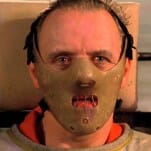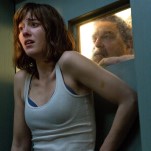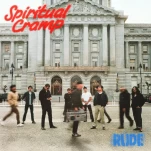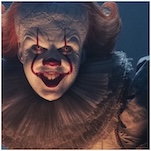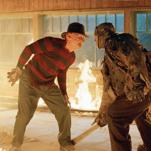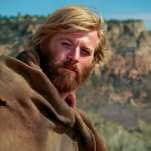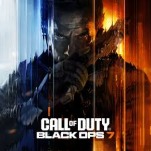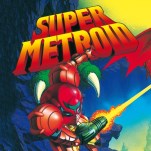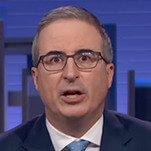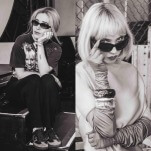The Best Sci-Fi Movies on Tubi Right Now
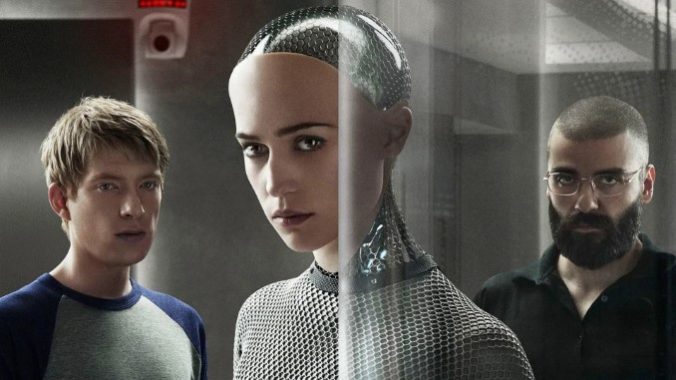
Browsing the mammoth selection of movies on Tubi has always been, and will presumably always be, a dizzying experience. None of the other, competing FAST (free ad-supported TV) streamers can seemingly stand up to the megalithic overall selection that Tubi can boast, particularly when it comes to genre fare such as horror or sci-fi movies. Look no further than our regularly updated list of the best horror movies streaming on Tubi for just such an indication of how deep these rabbit holes go.
We thought it was time, now, for the sci-fi genre to get the same respect and treatment–and once again, Tubi’s selection is vast and eclectic, hitting on sci-fi dramas, action crossovers, indie fare and classics from the 1970s and 1980s. As is so often the case, though, actually attempting to browse through the Tubi selection is like trying to pan for gold–there’s no way to refine the categories further, and you can’t even sort a genre alphabetically. Allow our selections, then, to point you in the right direction in terms of finding the best sci-fi movies that Tubi has to offer.
The 20 Best Tubi Sci-Fi Movies
1. Ex Machina
Year: 2015
Director: Alex Garland
Stars: Alicia Vikander, Domhnall Gleeson, Oscar Isaac
Rating: R
While popular science-fiction films have taught us that, no matter what we do, robots that become self-aware will eventually rise up and kill us, recent advances in artificial intelligence in the real world have confirmed something much seedier about the human imperative: If given the technology to design thinking, feeling robots, we will always try to have sex with them. Always. Alex Garland’s beautifully haunting film seems to want to bridge that gap. Taking cues from obvious predecessors like 2001: A Space Odyssey and AI—some will even compare it to Her—Ex Machina stands solidly on its own as a highly stylized and mesmerizing film, never overly dependent on CGI, and instead built upon the ample talents of a small cast. The film’s title is a play on the phrase deus ex machina (“god from the machine”), which is a plot device wherein an unexpected event or character seemingly comes out of nowhere to solve a storytelling problem. Garland interprets the phrase literally: Here, that machine is a robot named Ava, played by Swedish actress Alicia Vikander, and that nowhere is where her creator, Nathan (Oscar Isaac), performs his research and experiments. Ava is a heavenly mechanical body of sinewy circuitry topped with a lovely face, reminiscent of a Chris Cunningham creation. Her creator is an alcoholic genius and head of a Google-like search engine called Bluebook which has made him impossibly rich. Enter Caleb (Domhnall Gleeson), who is helicoptered in after winning a lottery at work for which the prize is a week at Nathan’s house. Nathan also intends to use Caleb to conduct something of a Turing test on steroids with Ava to determine if she can truly exhibit human behavior. In fact, Ex Machina seems designed around the performances of its excellent mini-ensemble; it’s an awfully attractive film, appropriately seductive. No doubt it was intended to provoke conversations about the morality inherent in “creating” intelligence—as well as whether it’s cool to have sex with robots or not. —Jonah Flicker
2. Moon
Year: 2009
Director: Duncan Jones
Stars: Sam Rockwell, Kevin Spacey, Dominique McElligott, Kaya Scodelario, Benedict Wong
Rating: R
First-time director Duncan Jones is overt about his stylistic appropriations of Stanley Kubrick’s 2001: A Space Odyssey, right down to the sweeping orchestral music that frames the opening shots of the titular satellite and Earth. Yet, where Kubrick tapped into existential fears about human extinction and the future of civilization, Jones hypothesizes the logical conclusion of that dark vision: a world where the need for more energy has rendered humanity a manufactured cog of multinational corporations whose reach now extends beyond the boundaries of Earth. The film’s plot centers on Sam Bell (Sam Rockwell), the only human on a lunar mining facility that harvests Helium-3, a clean fuel that can meet a near-future Earth’s ballooning energy demands. Base computer system GERTY (Kevin Spacey) is his sole companion on Sam’s three-year caretaking mission, since a supposed satellite failure means he can only send and receive pre-recorded messages. When an accident nearly kills Sam, he’s saved by a clone of himself and begins to unravel the sinister nature of the base, and his existence. Moon cribs heavily from the retro-futuristic look of ‘60s and ‘70s sci-fi for its claustrophobic and sanitized depiction of the moon base, but this high-tech eye candy is only the backdrop to a larger morality tale about humanity’s ever-shrinking position within a technologically-saturated society. When the human experience can be synthesized (and thus made disposable), does such a thing as “humanity” even exist? There’s a host of challenging philosophical threads throughout—cloning, masculinity, energy, corporate power—but those individual issues complement rather than engulf the larger narrative. Moon is a superlative example of science fiction that hearkens to the genre’s roots: social commentary on the human condition, without the easy catharsis of overblown special effects and space opera. It’s the ultimate rarity in modern cinema: a mature, engaging and thoughtful sci-fi movie, and proof that there’s life yet left in the genre. —Michael Saba
3. Ghost in the Shell
Year: 1995
Director: Mamoru Oshii
Stars: Atsuko Tanaka, Akio Otsuka, Iemasa Kayumi
Rating: PG-13
It’s difficult to overstate how enormous of an influence Ghost in the Shell exerts over not only the cultural and aesthetic evolution of Japanese animation, but over the shape of science-fiction cinema as a whole in the 21st century. Adapted from Masamune Shirow’s original 1989 manga, the film is set in the mid-21st century, a world populated by cyborgs in artificial prosthetic bodies, in the fictional Japanese metropolis of Niihama. Ghost in the Shell follows the story of Major Motoko Kusanagi, the commander of a domestic special ops task-force known as Public Security Section 9, who begins to question the nature of her own humanity surrounded by a world of artificiality. When Motoko and her team are assigned to apprehend the mysterious Puppet Master, an elusive hacker thought to be one of the most dangerous criminals on the planet, they are set chasing after a series of crimes perpetrated by the Puppet Master’s unwitting pawns before the seemingly unrelated events coalesce into a pattern that circles back to one person: the Major herself.
When Ghost in the Shell first premiered in Japan, it was greeted as nothing short of a tour de force that would later go on to amass an immense cult following when it was released in the states. The film garnered the praise of directors such as James Cameron and the Wachowski siblings (whose late-century cyberpunk classic The Matrix is philosophically indebted to the trail blazed by Oshii’s precedent). Everything about Ghost in the Shell shouts polish and depth, from the ramshackle markets and claustrophobic corridors inspired by the likeness of Kowloon Walled City to the sound design, evident from Kenji Kawai’s sorrowful score to the sheer concussive punch of every bullet firing across the screen. Oshii took Shirow’s source material and arguably surpassed it, taking an already heady science-fiction action drama and transforming it into a proto-kurzweilian fable about the dawn of machine intelligence. Ghost in the Shell is more than a cornerstone of cyberpunk fiction: It’s more essential in this day and age than it was over twenty-years ago. A story about what it means to craft one’s self in the digital age, a time where the concept of truth feels as mercurial as the net is vast and infinite.
4. Under the Skin
Year: 2013
Director: Jonathan Glazer
Stars: Scarlett Johansson, Paul Brannigan, Antonia Campbell-Hughes, Krystof Hádek
Rating: R
Under the Skin is unified in purpose and in drive. It is a biting examination of sexual politics and a dissertation on the bodies we inhabit—how those bodies create a paradigm of ownership. Scarlett Johansson plays the alien avatar, the predator, the cipher whose weakness is her awakening humanity. When she looks in a mirror, lost in a gaze at her own body, it’s a reminder to us to find some remove from our weary familiarity with ourselves, to think, “Golly, what strange things we are.” The film’s tragic conclusion is an assertion that we achieve some positive ideal of what it is to be human when we accept a state of vulnerability, when we forsake the power position in our sexual communication. When we allow for the reality of our frailty, we can care for the frailty in all around us—and this is a very dangerous thing to do. Especially in a world riddled with corruption and malice that seeks to press its advantage. Under the Skin shows us these truths with images that are impossibly beautiful, terrifying and ultimately haunting. There is no exposition, only voids which suspended shells of victims float in, laser sharp lights piercing darkness, menacingly stoic bikers, snowflakes falling into lenses. There is a scene on a beach that plays out like a Bergman or Haneke set-piece and is just as heartbreaking as that would entail. Under the Skin is a soul-crushing work and yet, somehow, the film reiterates that we must continue working towards finding our souls. An artful cascade of multiple exposures of random people, about midway through the film, would seem to symbolize the birth of empathy in Johansson’s femme fatale, and while this is the beginning of the end for her, it can’t help but resonate in Under the Skin with all the radiance of beatitude. These are scenes, statements, questions that are only possible within the framework that the film’s science fiction aspect provides, for these are not the thought processes bound by what is real, but what could be. —Chad Betz
5. Total Recall
Year: 1990
Director: Paul Verhoeven
Stars: Arnold Schwarzenegger, Rachel Ticotin, Sharon Stone
Rating: R
Very loosely based on the Philip K. Dick short story “We Can Remember It for You Wholesale” (and aren’t all PKD adaptations “very loose”?), Total Recall functions as a construct for Paul Verhoeven to take a high-concept premise about memory implants and lost identity and motivational uncertainty and turn it into an Arnold Schwarzenegger schlock-fest. It should be bad, but it’s not; it should be, at best, cheesy fun—but it’s even more than that. Unlike many of it’s sci-fi action peers, Total Recall never runs out of steam or ideas; it starts with the memory implant stuff, but on the back end gives us a vividly imagined Mars society with an oppressed mutant population (which is, like, the best special make-up effects portfolio ever) and a secret alien reactor that’s a MacGuffin but also a deus ex machina. The plot’s a mess but so is Arnold. It all works. Total Recall’s $60 million production budget was absolutely huge for its time, but unlike similar Hollywood ventures that put money towards glitz (like the 2012 remake, so slick it slips right out of one’s head), Verhoeven uses the loot to give us more dust, more grit, more decrepit sets, more twisted prosthetics and maximum Arnold. Verhoeven, in fact, uses Arnold as much as he uses anything else in the budget to tell this darkly exuberant story, from the contorted confusion of the set-up right on through to the eye-popping finale. It results in a sci-fi screed written in the form of a hundred Ahh-nuld faces, absurd and unforgettable. For as many times as Dick has been adapted, this is perhaps the one time the go-for-broke energy and imagination of his work has made it into the cinema (Blade Runner is something else entirely). Total Recall may have little in common with the actual content of the story it blows up, but it knows the vibe. And PKD vibes are the best kind. —Chad Betz
6. Dark City
Year: 1998
Director: Alex Proyas
Stars: Rufus Sewell, Kiefer Sutherland, Jennifer Connelly, Richard O’Brien, Ian Richardson, William Hurt
Rating: R
Alex Proyas’s magnum opus serves up a cerebral sci-fi extravaganza as filtered through the visual tropes of film noir and German Expressionism. A staggering achievement in imagination, Dark City, like clear predecessor Blade Runner, flopped at the box office only to be revived later as a beloved cult classic. The film casts Rufus Sewell as amnesiac John Murdoch who wakes up one night to discover that his city is (quite literally) under the manipulation of a band of mysteriously pale men in jet-black trench coats and fedoras. Along for the ride is Kiefer Sutherland as a crazed scientist and Jennifer Connelly as the femme fatale, our hero’s estranged wife. One might also draw a straight line between this and The Matrix, released a year later. The similarities between the two films’ visual styles and themes of slavery, techno-rebellion and free will are nigh-impossible to miss, and “many visual essays”:http://www.electrolund.com/2004/10/matrix-city-a-photographic-comparison-of-the-matrix-and-dark-city/ have been written specifically to compare the two movies. John Murdoch’s arc is only slightly less portentous than that of the prophesied One (Keanu Reeves) in The Matrix—both are seemingly normal men scooped up and thrust into a web of slowly untangling secrets while discovering that they possess special powers that will eventually allow them to defeat the puppetmasters who created their reality. The two films were even largely filmed at the same studio–Fox Studios Australia–and possess a similar green-tinged patina of unreality. Ultimately, Dark City is a bit more philosophically aloof than the popcorn-munching, easier to grasp Matrix, which is probably the reason the latter eventually became a cultural touchstone. But Dark City deserves to be seen, both on its own merits and as an exercise to see which of its sights may have lodged in the mind of the Wachowskis, waiting to be reborn in the next year’s blockbuster. —Mark Rozeman and Jim Vorel
7. Colossal
Year: 2017
Director: Nacho Vigalondo
Stars: Anne Hathaway, Jason Sudeikis, Dan Stevens, Tim Blake Nelson, Austin Stowell
Rating: R
Colossal is simply a much darker, more serious-minded film than one could possibly go in expecting, judging from the marketing materials and rather misleading trailers. It blooms into a story about sacrifice and martyrdom, while simultaneously featuring an array of largely unlikable characters who are not “good people” in any measurable way. I understand that description sounds at odds with itself—this film is often at odds with itself. But in the cognitive dissonance this creates, it somehow finds a streak of feminist individuality and purpose it couldn’t have even attempted to seek as a straight-up comedy. What Nacho Vigalondo has created in Colossal is a truly unusual, sometimes head-scratching aberration, a film with tonal shifts so jarring that the audience’s definition of its genre is likely to change repeatedly in the course of watching it. Aspects of the film defy explanation, but one thing is clear: Nobody was stifling the writer-director, and we’ve been given one of the most interesting films of 2017. Vigalondo takes aim at the clichés of film festival dramas before smashing them under a giant, monstrous foot. —Jim Vorel
8. The Man Who Fell to Earth
Year: 1976
Director: Nicholas Roeg
Stars: David Bowie, Rip Torn, Candy Clark, Buck Henry
Rating: R
Imbued with newfound poignancy and melancholia after the passing of its mercurial lead Starman, David Bowie, Nicholas Roeg’s impressionistic, ravenous, experiential masterpiece is one of the rare films about aliens that feels as exotic in its form as its content. Filled with Roeg’s characteristically discursive, paradoxically symmetrical but nonlinear cutting and violently sensual imagery, The Man Who Fell to Earth is as much about subverting the very nature of human experience as it is about offering an outside window into our culture. As the “secretive, but not private” Thomas Jerome Newton—a meteoric billionaire industrialist whose knowledge allows him to skip decades of scientific stranglehold at a mere moment—Bowie’s version of a universal traveler is less about a misunderstanding of the world than a semantic confusion of the pronunciation of words, or an inability to reinforce his own externalized narrative. Even as Newton leaps every known scientific hurdle, his life force is slowly being wrung out by competitors and friends alike who are so consumed with success they’re unable to see the big picture, or recognize the importance of Newton’s own interest in returning to his family. In what both represents and replicates the experience of watching a Roeg film, Newton obsesses over dozens of televisions, attempting to collectively view reality as one congealed experience. As he explains, “Television shows you everything, but it doesn’t tell you everything.” Moving decades in single frames, Newton can’t escape this misery of his own making, basking in the death of his memories over endless gins as he experiences seemingly multiple lifetimes in a single event. Referring to his eternal imprisonment, Rip Torn’s traitorous Nathan Bryce asks, “Are you mad that we did this?” On the verge of passing out, Newton responds, “We’d have probably treated you the same if you came over to our place.” Even aliens aren’t immune to our vices of apathy and despair. —Michael Snydel
9. Source Code
Year: 2011
Director: Duncan Jones
Stars: Jake Gyllenhaal, Vera Farmiga, Michelle Monhagan, Jeffrey Wright
Rating: PG-13
Much like Edge of Tomorrow, our hero in Source Code has to relive the same day over and over again, but on a much smaller scale. Captain Colter Stevens (Jake Gyllenhaal) is the perfect candidate to test a new program that allows people to live through the eyes (and memories) of someone else lost to time—but only for a few minutes. Through these reconfigured memories, Stevens is sent back to a Chicago commuter train right before a bombing takes the lives of everyone aboard, and it’s his mission to figure out what happened. Stevens never actually “travels” through time, but it hardly matters: Source Code explores the reality of consciousness and the power of perspective, claiming that time may just be all in our heads. —Jacob Oller
10. The Endless
Year: 2017
Director: Justin Benson, Aaron Moorhead
Stars: Justin Benson, Aaron Moorhead
Rating: NR
Brotherhood’s a trip. Just ask Aaron Moorhead and Justin Benson, the horror filmmaking duo responsible for 2012’s Resolution, the “Bonestorm” segment in 2014’s VHS: Viral, and, in the same year, the tender creature romance Spring. Their latest, The Endless, is all about brotherhood couched in unfathomable terror of Lovecraftian proportions. The movie hinges on the petulant squabbles of boys, circular arguments that go nowhere because they’re caught in a perpetual loop of denial and projection. If the exchanges between its leads can be summed up in two words, those words are “no, you.” Boys will be boys, meaning boys will be obstinate and stubborn to the bitter end. Though, in The Endless, the end is uncertain, but maybe the title makes that a smidge obvious. Brothers Aaron and Justin Smith (played, respectively, by Moorhead and Benson, who gel so well as brothers that you’d swear they’re secretly related) were once members of a UFO death cult before escaping and readjusting to life’s vicissitudes: They clean houses for a living, subsist primarily on ramen, and rely so much on their car that Aaron’s repeated failure to replace the battery weighs on both of them like the heavens on Atlas’ shoulders. Then, out of the blue, they receive a tape in the mail from their former cultists, and at Aaron’s behest they revisit Camp Arcadia, the commune they once called home. Not all is well here: Bizarre bonelike poles litter Arcadia’s outskirts, flocks of birds teleport from one spot to another in the time it takes to blink, Aaron and Justin keep having weird déjà vu moments, and worse: There’s something in the lake, a massive, inky, inexplicable presence just below the surface. (Its image is only seen on camera once, but once is enough to make an impression.) Woven through the film’s eldritch dread are Moorhead and Benson. Their characters are locked in a cosmic struggle with a nameless adversary, but the narrative’s gaze is focused inward: On the Smiths, on brothers, on how far a relationship must stretch before it can be repaired. Intimacy is a staple element of Moorhead and Benson’s filmography. Here, the intimacy is fraternal, which perhaps speaks to how Moorhead and Benson feel about each other. They may not be brothers themselves, but you can’t spend your career making movies with the same person over and over again without developing an abiding, unspoken bond with them. —Andy Crump
11. A Scanner Darkly
Year: 2006
Director: Richard Linklater
Stars: Keanu Reeves, Robert Downey Jr., Woody Harrelson, Winona Ryder, Rory Cochrane
Rating: R
A Scanner Darkly, Richard Linklater’s second animated-over-live-footage film, can be hard to remember without recalling specific circumstances. It hits that deeply, touches that kind of nerve—looks the way everything feels when pumped full of anesthesia for surgery, nothing in any frame still, everything crawling like hallucinated bugs in the film’s opening scene. About a future in which the War on Drugs is lost and a new drug named Substance D is sweeping the nation, A Scanner Darkly adapts the Philip K. Dick novel to follow Bob Arctor (Keanu Reeves) as an undercover detective who becomes an addict, the drug splitting his personality into two. Arctor takes D with his friends James Barris (Robert Downey, Jr.) and Ernie Luckman (Woody Harrelson), and things have gotten bad. Those bugs? They’re not real, but they’re crawling all over him at any given moment. Accordingly, RDJ and Harrelson are not actors who deal in stillness, constantly moving, always some nervous twitch displaying some desperate itch that begs to be scratched. Toss in animation that dances from frame to frame, and we’re a long way from the gorgeous Vienna of Before Sunrise or the suburban high school of Dazed and Confused. Still, Linklater masterfully guides each scene to maintain the sense of dread permeating Dick’s dystopian work. —Travis M. Andrews
12. Logan’s Run
Year: 1976
Director: Michael Anderson
Stars: Michael York, Jenny Agutter, Richard Jordan, Roscoe Lee Browne, Farrah Fawcett-Majors, Peter Ustinov
Rating: PG
In the far-flung future of 2274, 30 is the new 80. Unfortunately for those who think they’re entitled to a second act in life, like Logan 5 (Michael York), escaping can get you sentenced to “Deep Sleep” by the Gestapo-like Sandmen. And even if you make it past the human assassins, you could still wind up face-to-chrome grill with Box, the magnificently melodramatic robot who ran out of fish! And plankton! And sea greens! And protein from the sea!, and so decided it might as well flash-freeze some fresh Runners instead. I can’t prove it, but I have a sneaking suspicion Billy West modeled his performance of thespian robot Calculon from Futurama after Roscoe Lee Browne’s positively Shakespearean Box. “My birds! My birds! My birds!! —Scott Wold
13. Color Out of Space
Year: 2020
Director: Richard Stanley
Starring: Nicolas Cage, Madeleine Arthur, Elliot Knight, Joely Richardson
Rating: NR
The ways movies can capture the one-of-a-kind bizarre textures of H.P. Lovecraft’s work are limited. Known first as a great author and second as an enthusiastic Hitler stan, Lovecraft imagined his personal fears—particularly of “the masses”—into wholly unimaginable entities, his work so tethered to his pants-wetting neuroses that adapting it for a visual medium feels like a masochist’s chore. That makes Richard Stanley perfect for translating Lovecraft’s short story “The Colour Out of Space” into a feature-length film: The last time he tried making a horror movie it was 1994, and the feature was The Island of Dr. Moreau.
Turning Lovecraft’s words into coherent cinema is a comparative walk in the park, and in Color Out of Space, Stanley gaily strolls ahead with a palette sporting every shade of purple, adding splashes of phlox here and smears of thistle there before coating the screen entirely in heliotrope hues by the end. “Color” is the key word of the movie’s title and the most important tool in Stanley’s work belt: The longer the horror Lovecraft describes on the page endures and infects the world around it, the more vivid Stanley’s imagery becomes. The second most important tool, perhaps expectedly, is Nicolas Cage, starting off the 2020s on the right foot with another Cage-ian horror performance after his stellar work in 2018’s Mandy. If there’s an actor better-suited than Cage for conveying the experience of losing one’s sanity under Lovecraftian duress, the industry hasn’t found them yet. —Andy Crump /
14. Aporia
Year: 2023
Director: Jared Moshe
Stars: Judy Greer, Edi Gathegi, Payman Maadi, Faithe Herman, Whitney Morgan Cox, Veda Cienfuegos, Adam O’Byrne
Rating: R
Build a relationship, a home, a family, a life with the person you love over the years, and you will still occasionally give them The Look, the one that says, “who are you, and how well do I know you?” It’s the look Sophie (Judy Greer) gives her husband, Mal (Edi Gathegi), partway through Jared Moshe’s Aporia, when through the miracle of technology she puts the wrong things right and effectively brings him back from the grave. Mal starts out the film in the ground, seen only in flashbacks to better days before getting struck by Darby (Adam O’Byrne), a drunk driver, and dying. Then comes Jabir (Payman Maadi), a family friend and erstwhile physicist from an unidentified country who makes a living in America driving indifferent fares around town. Jabir has a remedy for Sophie’s grief, but it’s a doozy both existentially and ethically, in the tradition of so much science fiction cinema. Jabir has built a device one could generously call a “time machine” the way one could call a hellfire missile “demolition equipment.” It can’t send Sophie back in time, but it can send a burst of quantum-mechanical energy straight into Darby’s brain and kill him, before the day he kills Mal, which means Mal never dies and Sophie’s life doesn’t fall apart. Presented with her personal version of the ultimate time travel question – would you kill baby Hitler? – Sophie dithers, then pulls the trigger. The good news is, Mal is back, and everything’s back to normal. The bad news is, Darby has a family, Sophie has a conscience, and one morally suspect decision leads to a whole bunch of better-intended ones with their own imperfect outcomes. Greer, in one of her too-infrequent starring roles, plays to Sophie’s anxieties as well as her wants all at once, a tight-wound ball of nerves. Every time she disperses her tension, every time she talks with Mal and Jabir about disaster scenarios, the tension whips right back around like a boomerang, and she starts her emotional cycle all over again. It’s a performance that suits Greer’s reputation for playing unhinged types, reminding viewers that her reputation as a comic actor is built on a well-rounded skill set. Moshe is a gentle filmmaker, evinced by his realist aesthetic, unadorned by special effects, and his intrinsic compassion for Sophie’s dilemma. He cares. But he is necessarily stern, because for a movie like Aporia to work, a director has to mean what they’re saying, and he holds little back. Our actions matter, big or small, and now’s a good time for the sci-fi genre to give us a needed reminder.—Andy Crump
15. Donnie Darko
Year: 2001
Director: Richard Kelly
Stars: Jake Gyllenhaal, Jena Malone, Drew Barrymore, Mary McDonnell, Katharine Ross, Patrick Swayze, Noah Wyle
Rating: R
Apparently, at some point in its burgeoning cult ascendency, director Richard Kelly admitted that even he didn’t totally get what’s going on in Donnie Darko—going so far as to release a “Director’s Cut” in 2005 that supposedly cleared up some of the film’s more unwieldy stuff. Yet another example of a small budget wringed of its every dime, Kelly’s debut crams love, weird science, jet engines, superhero mythology, wormholes, armchair philosophy, giant bunny rabbits and Patrick Swayze (as a child molester, no less) into a film that should be celebrated for its audacity more than its coherency. It also helps that Jake Gyllenhaal leads a stellar cast, all totally game. In Donnie Darko, the only thing that’s clear is Kelly’s attitude: that at its core cinema is the art of manifesting the unbelievable, of doing what one wants to do when one wants to do it. —Christian Becker
16. Turbo Kid
Year: 2015
Directors: François Simard, Anouk Whissell, Yoann-Karl Whissell
Stars: Munro Chambers, Laurence Leboeuf, Edwin Wright, Aaron Jeffrey, Michael Ironside
Rating: NR
Turbo Kid is a joyous experience, the kind of insane indie wish-fulfillment that I can only imagine inspires other indie filmmakers to say “Well if that guy can pull off this movie, then I need to make a movie of my own.” It’s a gloriously absurd ode to ’80s era kids movies, apocalypse fiction and gore-centric horror, full of neon colors and exploding heads. The hyper-bloody ultraviolence in particular is insanely impressive, on a level rarely seen outside the likes of Peter Jackson’s Dead Alive. Add a twist of Michael Ironside playing a ham-fisted parody of his villain roles in movies like Scanners (talk about exploding heads) and Total Recall, and you have a serious cult classic in the making. Turbo Kid sells itself on its premise and iconography, but it’s far better than it truly has to be. —Jim Vorel
17. Vivarium
Year: 2020
Director: Lorcan Finnegan
Stars: Jesse Eisenberg, Imogen Poots
Rating: R
A quirky real estate story, where first-time homeowners Tom (Jesse Eisenberg) and Gemma (Imogen Poots) get a lot more than they bargained for, Vivarium is a low-key sci-fi nightmare of the mundane in the vein of early David Cronenberg. Director Lorcan Finnegan’s film also functions as a relationship allegory, where Tom and Gemma find themselves stuck in a trendy neighborhood of cookie-cutter homes where starting a family isn’t just an expectation but something foisted upon them. It isn’t as grisly as something like Shivers, but more affecting in its surreal design and hopelessness. Eisenberg and Poots own the screen as a disintegrating couple coping in distinct ways to their newfound terrarium where they are observed, manipulated, and—perhaps most disturbingly of all—objectively provided for by unseen and undefinable forces. Its 2020 release feels especially fitting as repetition and hopelessness become permanent residents of the couple’s home. Genre elements seep into the film, accelerating in hiccups and starts that are as arresting as the film’s intentionally artificial design. Startling sound dubbing, odd colorizing, and a few genuine “Oh shit” moments make Vivarium a tight, nasty fable that would fit in with the best Twilight Zone episodes. —Jacob Oller
18. Dark Star
Year: 1974
Director: John Carpenter
Stars: Dan O’Bannon, Brian Narelle, Cal Kuniholm, Dre Pahich
Rating: G
John Carpenter’s first feature film, Dark Star is an uneven, messy, but cinematically curious bit of ephemera, one that feels like a student art film primarily because that’s exactly how it began its life. Carpenter co-wrote with Dan O’Bannon, the writer of Alien and eventual writer-director of the immortal Return of the Living Dead, and some of O’Bannon’s wry humor can be felt in this tale of lazy, mentally addled long-haul space pilots as they suffer their way through an endless mission of destroying unnecessary or “unstable” planets. We can also palpably feel the crew’s debilitating boredom as they drift through space on a pointless quest, growing old as they listen to elevator music. It’s a slow, slow way to die.
Dark Star is at its best while exploring the philosophical confines of what feels like an experimental short film, as encapsulated by the redundancies and illogical nature of a system where the space pilots must debate with their own, A.I.-empowered and sentient bombs in order to convince the bombs to do their jobs. These strange discussions allow for rambling pontificating on the nature of free will and identity, contributing what are ultimately the signature sequences of Dark Star—men arguing with bombs about whether they should or shouldn’t explode. It’s as strange to see on screen as it sounds on the page. —Jim Vorel
19. Species
Year: 1995
Director: Roger Donaldson
Stars: Natasha Henstridge, Ben Kingsley, Michael Madsen, Alfred Molina, Forest Whitaker, Marg Helgenberger
Rating: R
Rarely has a genre movie been marketed and structured around the physical assets of a single actress more than Species was with model Natasha Henstridge. The screen debut of Henstridge certainly made a pop-cultural splash in the mid-1990s, during a downturn in classical horror cinema when crossovers with other genres (here it’s science fiction and more than a little of exploitation cinema) were one of the only viable ways to push horror into the mainstream. Species, in fact, was a bonafide box office smash, taking home more than $100 million as viewers (presumably male, for the most part) crowded cinemas to see Henstridge embody “sexy alien” Sil. Some 25 years later, the deeply ‘90s sensibilities of the film have turned it into something of a camp classic; one to be enjoyed especially for the seeming randomness of its supporting cast of character actors, which includes everyone from Forest Whitaker and Michael Madsen to Alfred Molina and a 15-year-old Michelle Williams. The FX haven’t quite held up, but at least the bad fashion will never die. —Jim Vorel
20. Highlander
Year: 1986
Director: Russell Mulcahy
Stars: Christopher Lambert, Sean Connery, Roxanne Hart, Clancy Brown
Rating: R
The premise is delightfully bananas: In this world, a small group of people who are immortal wander the Earth in competition for a vague “Prize.” Unable to have children, they regenerate all bodily harm unless decapitated—whereupon some weird electromagnetic life force is transferred to the victor of the duel in an explosive phenomenon known as “The Quickening.” With each Quickening, an immortal gains the knowledge and power of his defeated foe. The last non-headless man left standing at the end of “The Game” claims “The Prize.” Immortals have a weird ability to sense one another when they get closer—probably because there would be no other way to easily identify one another otherwise. The only specific prohibition on their bloody bouts seems to be that fighting on holy ground of any kind is forbidden. (Why? Who enforces it if somebody violates the rule, the Immortal Police?) This seems pretty promising: Fighters who grow in strength and power, exponentially, with each successive victory, until only the two absolute baddest remain. They’d probably be throwing Kamehameha waves and kicking over buildings after thousands of years of accumulated power, right? Nope, it just comes down to two dudes with swords clanging away at one another in a poorly lit, abandoned, vaguely industrial setting. Despite this, the film has endured with a gritty story, Sean Connery goofing around, an unforgettably crass and vile villain and Queen on the soundtrack. Australian director Russell Mulcahy’s background was in music videos—Highlander has that same kind of stylized, operatic, overblown nature. —Kenneth Lowe









